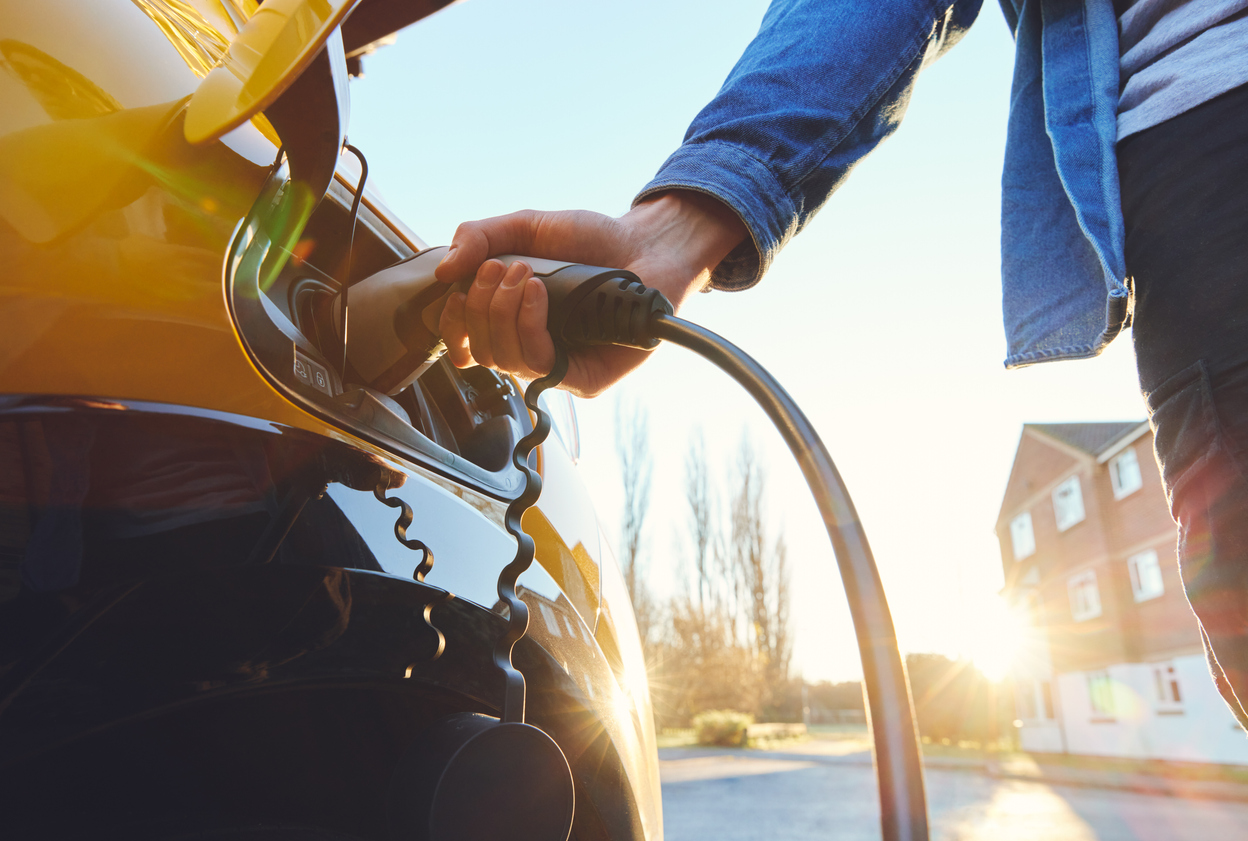Flowbird: The Road To Zero-Emissions Cities (And, The Parking When We Get There)

In 2019, the European Green Deal proposed a goal of reducing greenhouse gas emissions from transport by 90% by 2050. The Paris Climate Agreement set a goal of a 37.5% drop in car emissions by 2030. In the UK, all new cars and vans are set to be zero emissions at the tailpipe after 2035.
With new directives like the Alternative Fuels Infrastructure Regulations (AFIR), consumers will become more interested in driving EVs. The legislation mandates that cities in the EU provide adequate spaces for parking and charging, 98% uptime of public accessible chargers, and simple card payment at charging stations – setting the bar far higher for cities and the way they travel to net-zero.
The infrastructure of a net-zero city
Imagine driving an EV to your favourite coffee shop. When you park the car in a metered spot, you can also charge your car. At the payment kiosk, you select your time for parking and charging. You pay a standard rate and head into the shop to grab your coffee.
Or, imagine parking your EV in a garage on your way to work in a city centre. When you pay for the charge and your spot via the app on your phone, you can also note the next leg of your journey is by e-train. By taking public transit, the app reduces the cost of your charging.
Both experiences are possible in the zero-emissions cities we’re striving to build. Reaching these scenarios will not be easy, but there is a clear road ahead.
In the future, zero-emission cities will have one central hub to manage and streamline their entire mobility infrastructure. The benefits will be felt across the entire ecosystem – from people in single occupancy vehicles making their way to work, to backpackers using Mobility as a Service (MaaS) to connect public transportation routes across Europe.
While parking and charging may be the main part of the journey for some EV drivers, for many it will only be a small part. Cities might also find other ways to incentivise park and ride, or other forms of multi-modal journeys.
For instance, those choosing public transportation for the next leg of their journey could save on charging costs. The same would go for travellers who want to ride an e-bike, or walk, to reach their final destination. And every use of public transit would automatically apply fare caps, so that the best fare for journeys is guaranteed without requiring prepayment.
The net zero city sounds like a dream, and yet many of its necessary components already exist. Open loop payment systems, for instance, can already take into account your full journey and provide a frictionless multimodal journey experience. Tap-to-ride is simple and doesn’t demand a new app download, or registration with a transport or mobility provider. All mobility payments can become as easy as ApplePay.
E-mobility infrastructure, too, is far closer to this future than you might think. While EV charging has had an imperfect debut in many cities, the right technology already exists to win the race to develop infrastructure fit for a zero-emissions future. What we now need to address is the broader decision-making and strategy.
Democratising your city’s existing infrastructure
Right now, cities across the globe are attempting to dramatically increase the number of public charging stations, driven by national or regional targets. By 2030, for instance, the UK hopes to have around 300,000 public charging stations, while Paris needs to increase the percentage of its parking spaces with EV charging stations from 1.5% to 15%.
The question we at Flowbird have been asking is:
“How can we enable cities to roll-out infrastructure that maximises the utilisation of each charging station, connected throughout their e-mobility network?”
The fastest way to reach a zero-emissions transportation infrastructure is with a partner that can create one centralised hub that communicates with e-charging stations across the public and private sectors.
Here are a few examples.
Bus companies are investing millions in electric buses, and the charging assets. These charging stations need extra electrical infrastructure due to the consumption the buses need to operate.
Those charging assets are idle for large portions of the day while buses are on the road. And there’s no reason why, with a carefully managed arrangement, these idle charging stations couldn’t be made available for fleet vehicles, city service providers, or private service EV-investors (like Amazon).
Those in the private sector also stand to gain from taking a similar approach, since it will maximise the ROI for their charging stations. Car dealerships may want to offer their charging stations exclusively for patrons, or folks driving their brand of EV. Yet outside of shop hours, there may be a business case to open charging stations to everyone.
This way of thinking not only democratises the benefits of existing infrastructure, but it also helps pay for the investment and upkeep of the system.
It’s crucial to connect all e-mobility players, with a partner like Flowbird, for a seamless experience.
Addressing the reality of unavailable charging stations and failed transactions
Imagine driving out of your way to reach a charging station. Despite being available and active on your app, you find an “Out of Order” sign taped to the machine. Now you’re on less than 10% charge without another station in reach.
In this situation, many drivers call customer service and expect an immediate solution. Yet, getting the charging station fixed is complicated. The service provider has to contact the hardware or energy provider depending on the issue. The fix requires a telephone chain that leads to long down times – sometimes lasting months.
The sobering truth is that 15% of EV charging stations are unavailable and 40% of all paid EV transactions fail. And in many cities, no apps are currently able to provide city-wide, real time information to ensure drivers reach an available, and working charger.
In the future, the streamlined and centralised hub allows drivers to assess charging assets city wide, with options no matter where they’re located in the city. Flowbird can act as a full service provider to ensure drivers find accessible charging stations with reliable 24/7 support.
Reliable service is essential to build trust with anyone moving about your city. If drivers don’t believe they can find the stations they need to make their journeys, they won’t take them. If they don’t even invest in an EV due to the reputation of lacklustre infrastructure, our cities will never have the chance to reach zero-emissions standards.
Zero-emission cities are around the corner with the right partnerships
Strategic, proactive, well-managed and maintained EV charging stations that are incorporated into the transportation network at large can meet consumer needs and expectations. That’s where Flowbird comes in.
We’ve created an agnostic platform where you can connect any hardware or any energy consortium to our solution. We can also take care of all the customer support inquiries, and standardise the payment process. Then, we can use the data collected to determine where to invest.
Residents will cast the responsibility of EV charging stations accessibility and performance on one group – the city. Regardless of where the energy is coming from, how the hardware was built, or who is managing the charging station.
So when your residents look to you for a seamless charging experience, will your city be ready?
About Flowbird
 Flowbird solutions are used in 4,350 cities in 80 countries to make journeys effortless.
Flowbird solutions are used in 4,350 cities in 80 countries to make journeys effortless.
Our relentless desire to enable mobility, through frictionless technology, which gives back time to us all, is the driving force behind our innovations. We are dedicated to complete, data-led solutions, which can be used to inform mobility policy and make a positive impact.






Comments
There are no comments yet for this item
Join the discussion